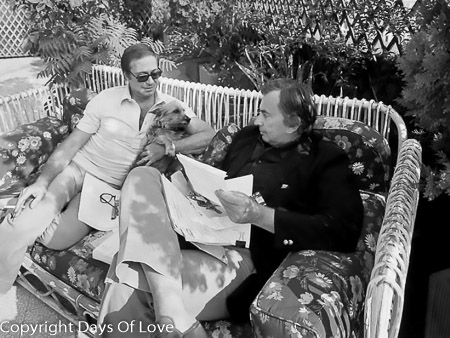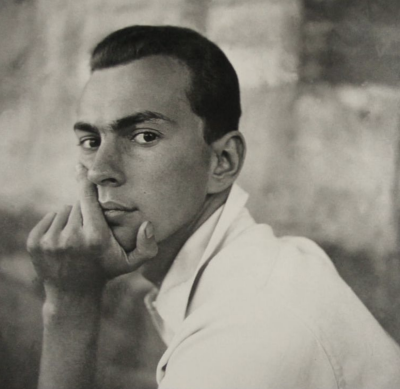

Partner Howard Austen, buried together
Queer Places:
Phillips Exeter Academy, 20 Main St, Exeter, NH 03833, Stati Uniti
Los Alamos Ranch School, Los Alamos, Nuovo Messico 87544, Stati Uniti
Rhode Island School of Design, 2 College St, Providence, RI 02903, Stati Uniti
Sidwell Friends School, 3825 Wisconsin Ave, Washington, DC 20016, Stati Uniti
Hotel Chelsea, 222 W 23rd St, New York, NY 10011, Stati Uniti
2562 Outpost Dr, Los Angeles, CA 90068, USA
San Remo Café, 93 Macdougal St, New York, NY 10012, Stati Uniti
The Algonquin Hotel Times Square, 59 W 44th St, New York, NY 10036, Stati Uniti
Villa la Rondinaia, 84010 Ravello SA, Italia
Edgewater, Station Hill Rd, Barrytown, NY 12507
Rock Creek Cemetery, 201 Allison St NW, Washington, DC 20011, Stati Uniti
 Eugene
Luther Gore Vidal (born Eugene Louis Vidal; October 3, 1925 – July 31,
2012) was an American writer and public intellectual known for his
patrician manner, epigrammatic wit, and polished style of writing.[1][2]
Eugene
Luther Gore Vidal (born Eugene Louis Vidal; October 3, 1925 – July 31,
2012) was an American writer and public intellectual known for his
patrician manner, epigrammatic wit, and polished style of writing.[1][2]
Vidal was born to a political family; his maternal grandfather, Thomas Pryor Gore, served as United States senator from Oklahoma (1907–1921 and 1931–1937). He was a Democratic Party politician who twice sought elected office; first to the United States House of Representatives (New York, 1960), then to the U.S. Senate (California, 1982).[3]
As a political commentator and essayist, Vidal's principal subject was the history of the United States and its society, especially how the militaristic foreign policy reduced the country to a decadent empire.[4] His political and cultural essays were published in The Nation, the New Statesman, the New York Review of Books, and Esquire magazines. As a public intellectual, Gore Vidal's topical debates on sex, politics, and religion with other intellectuals and writers occasionally turned into quarrels with the likes of William F. Buckley Jr. and Norman Mailer. Vidal thought all men and women are potentially bisexual, so he rejected the adjectives "homosexual" and "heterosexual" when used as nouns, as inherently false terms used to classify and control people in society.[5]
As a novelist Vidal explored the nature of corruption in public and private life. His polished and erudite style of narration readily evoked the time and place of his stories, and perceptively delineated the psychology of his characters.[6] His third novel, The City and the Pillar (1948), offended the literary, political, and moral sensibilities of conservative book reviewers, with a dispassionately presented male homosexual relationship.[7]

Gore Vidal (1925-2012)
Writer
Paris, 17 February 1949
Vintage print
Vogue, The Condé Nast Publications Ltd
.jpg)
Hotel Chelsea, New York City
In 1950, Gore Vidal met Howard Austen, who became his partner for the next 53 years.[112] He said that the secret to his long relationship with Austen was that they did not have sex with each other, "It's easy to sustain a relationship when sex plays no part, and impossible, I have observed, when it does."[113] Harold Lang was an American dancer, singer and actor. Both Arthur Laurents and Gore Vidal reported having affairs with Lang.
Gore Vidal had gone on record as deliberately injecting a gay subtext into his script for Ben-Hur (1959). Vidal was an outsider, a well-known novelist, not a screenwriter. With director William Wyler's assent, he concocted as back story a homosexual love affair between Ben-Hur and Messala, played by Charlton Heston and Stephen Boyd. Vidal clued Boyd into the idea, but kept the homophobic Heston in the dark. The result was a certain shine in Boyd's eyes during the scene where the two old friends link arms to toast one another, and a certain inflecction in his words of devotion.
Before his life wound down Lucien Price would become prominently associated with Gore Vidal, the author of the first explicitly homosexual American novel published in the U.S., The City and the Pillar. Later, Julian (1964), Vidal’s bestselling “comeback book” after years of persecution, was dedicated to Lucien Price.
In the historical novel genre, Vidal re-created in Julian (1964) the imperial world of Julian the Apostate (r. AD 361–63), the Roman emperor who used general religious toleration to re-establish pagan polytheism to counter the political subversion of Christian monotheism.[8]
In the genre of social satire, Myra Breckinridge (1968) explores the mutability of gender role and sexual orientation as being social constructs established by social mores.[9]
In an interview with Esquire in 1969, Gore said "Homosexuality is as natural as heterosexuality. Notice I use the word natural, not normal."[39] Commenting his life's work and his life, he described his style as "Knowing who you are, what you want to say, and not giving a damn."[39]
In Burr (1973) and Lincoln (1984), the protagonist is presented as "A Man of the People" and as "A Man" in a narrative exploration of how the public and private facets of personality affect the national politics of the U.S.[3][10]
In the multi-volume memoir The Diary of Anaïs Nin (1931–74), Anaïs Nin said she had a love affair with Vidal, who denied her claim in his memoir Palimpsest (1995). Vidal also said that he had an intermittent romance with the actress Diana Lynn, and alluded to possibly having fathered a daughter.[108][109] Yet, regarding Nin, in the online article "Gore Vidal's Secret, Unpublished Love Letter to Anaïs Nin" (2013), author Kim Krizan said she found an unpublished love letter from Vidal to Nin, which contradicts his denial of a love affair with Nin. Krizan said she found the love letter while researching Mirages, the latest volume of Nin's uncensored diary, to which Krizan wrote the foreword.[110] Moreover, he was briefly engaged to the actress Joanne Woodward before she married the actor Paul Newman; after marrying, they briefly shared a house with Vidal in Los Angeles.[111]
In Celebrity: The Advocate Interviews (1995), by Judy Wiedner, Vidal said that he refused to call himself "gay" because he was not an adjective, adding "to be categorized is, simply, to be enslaved. Watch out. I have never thought of myself as a victim... . I've said – a thousand times? – in print and on TV, that everyone is bisexual".[114]
In the course of his life, Vidal lived at various times in Italy and in the United States. In 2003, as his health began to fail with age, he sold his Italian villa La Rondinaia (The Swallow's Nest) on the Amalfi Coast in the province of Salerno and he and Austen returned to Los Angeles.[115] Howard Austen died in November 2003 and in February 2005 his mortal remains were re-buried at Rock Creek Cemetery, in Washington, D.C., in a joint grave plot that Vidal had purchased for himself and Austen.[116]
In 2010 Vidal began to suffer from Wernicke–Korsakoff syndrome, a brain disorder often caused by alcoholism.[117] On July 31, 2012 Vidal died of pneumonia at his home in the Hollywood Hills at the age of 86.[117][118][119] A memorial service was held for him at the Gerald Schoenfeld Theatre in New York City on August 23, 2012.[120] Vidal's body was buried next to Howard Austen in Rock Creek Cemetery, in Washington, D.C.[121]
My published books: